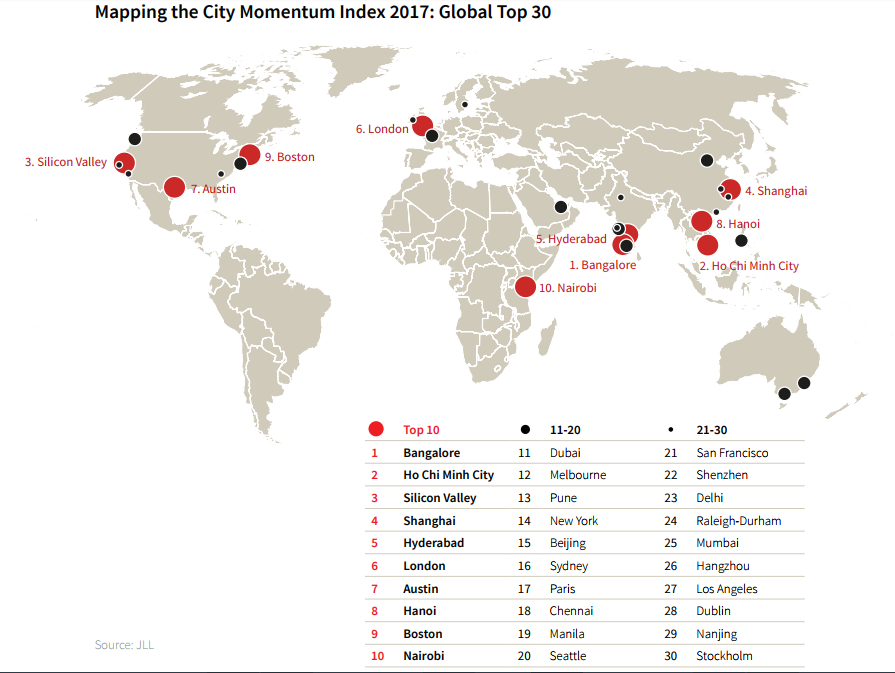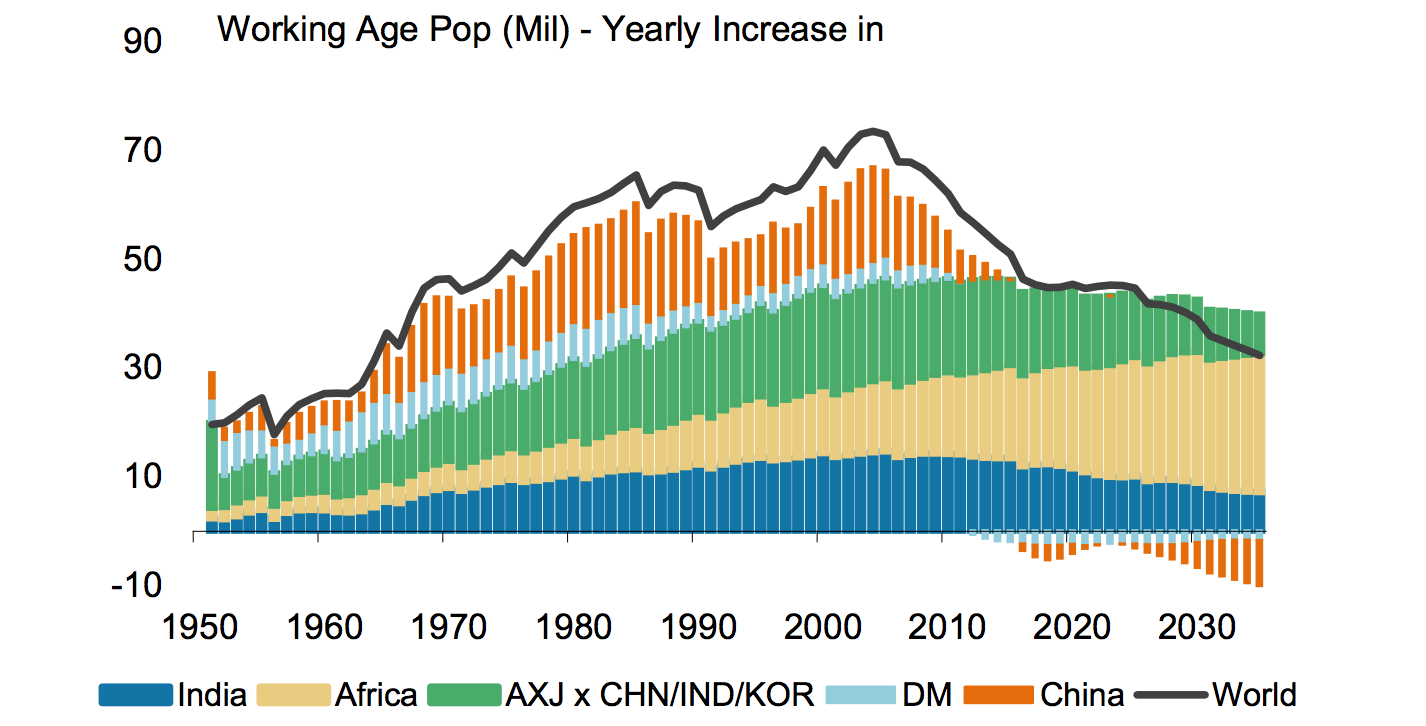In 2001, Jim O’Neill, an economist at Goldman Sachs, coined the now-famous acronym ‘BRIC,’ and predicted that the countries referenced (Brazil, Russia, India, and China) would be among the world’s fastest growing economies. Over the next decade, he was proven largely correct: GDP per capita (an indicator of individual wealth) in BRIC countries collectively tripled.
In his 2011 book, The Growth Map: Economic Opportunity in the BRICs and Beyond, O’Neill explained the key idea behind his prediction:
Simply applying the most credible estimates of long-term demographic trends, especially for the working population, is the intellectual cornerstone of the argument for the BRICs’ potential. Between them, the four BRIC countries are home to close [to] 3 billion people, not far off half the world’s population.
In some ways, it shouldn’t be that much of a surprise…The world’s largest populated nations probably should have the biggest economies.
In other words, with demographics and productivity playing critical roles, countries with large, working-age populations are well positioned to achieve above-average growth.
Recently, in April 2017, global consultancy, McKinsey, announced that this above-average growth had shifted beyond BRICs. The firm put forth the idea that there are “new [global] growth dynamics, with the mental model of BRIC (Brazil, Russia, India, and China) countries giving way to a regional emphasis on ICASA (India, China, Africa, and Southeast Asia).”
McKinsey further went on to predict that over half of global growth over the next ten years will come from countries within the ICASA region. Part of the firm’s rationale harkens back to O’Neill’s insight—demographics and productivity drive growth:
There are three geographic entities—India, China, and Africa—in which urbanization is empowering populations that exceed one billion people, and a fourth, Southeast Asia, with more than half a billion. Together, these enormous “ICASA” (India, China, Africa, and Southeast Asia) markets hold the potential for significant continued expansion.
While ICASA’s collective ~3.5 billion population is not to be ignored, given the importance of urbanization (a key global megatrend), it’s also worthwhile to keep abreast of city-level trends in addition to those at the national/regional levels. Earlier this year, JLL released their 2017 City Momentum Index (PDF) which examined 42 variables across 134 cities to rank the most dynamic cities, those which are able to best embrace rapid change and compete:

For a relevant article on why ventures in India, China, and Southeast Asia should matter to entrepreneurs targeting Africa, see African Innovators Should Look East, Not West, For Business Model Inspiration.Six of JLL’s top 10 cities are in ICASA countries, as are half of the top twenty. Honing in on Africa, Nairobi, East Africa’s technology hub, was among the world’s top 10 most dynamic cities. The World Economic Forum adds some perspective to the Index: “The overriding factors that characterize the world’s most dynamic cities are technology and innovation — and cities that best absorb, adapt, and leverage these drivers come out on top.”
While non-African ICASA cities comprised a significant part of JLL’s Index, given very favorable demographic trends, there is great potential for other cities in Africa in years to come.
Notably, Charles Goodhart, a professor at the London School of Economics, and Manoj Pradhan, a Morgan Stanley economist find, in a 2015 research report (‘Can Demographics Reverse Three Multi-Decade Trends?’) that over the next 15 years, Africa will provide the lion’s share of the world’s working-age population growth on an absolute basis:

If long-term working age population trends were the “intellectual cornerstone” of the argument for BRICs in 2001, as O’Neill put it, then the same trends now favor ICASA, particularly Africa. Seen through this lens, global growth is indeed shifting towards Africa (whose working-age population is projected to exceed China’s and India’s before 2040). And with African markets predicted to become engines of global growth over the medium-term, opportunities are large for innovators to harness.
If you enjoyed this article, subscribe to be notified when more like it are published.





Share: